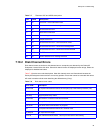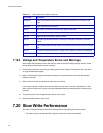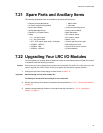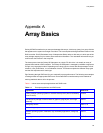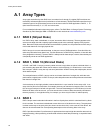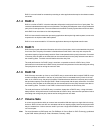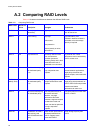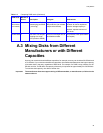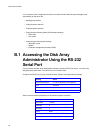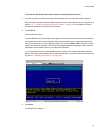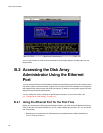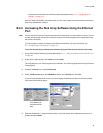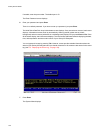
Array Basics
93
A.3 Mixing Disks from Different
Manufacturers or with Different
Capacities
An array can contain disks with different capacities; for example, an array can include a 36-GB disk and
a 72-GB disk. If you mix disks with different capacities, the smallest disk determines the logical capacity
of all other disks in the array, regardless of RAID level. For example, if a RAID 0 array contains one 36-
GB disk and four 72-GB disks, the capacity of the array is equivalent to approximately five 36-GB disks.
To maximize disk capacity, use disks of similar size.
Important The manufacturer does not support mixing of different models, or manufacturer’s, of drives in the
same enclosure.
RAID 10
(Also known
as mirrored)
4 Combination of RAID 0
(data striping) and RAID
1 (mirroring)
Highest performance and
data protection (can tolerate
multiple drive failures)
High redundancy cost overhead;
because all data is duplicated,
twice the storage capacity is
required; requires minimum of
four drives
Volume Sets 1 Non-RAID, non-striped
mapping to a single
drive (similar to JBOD)
Ability to use a single drive to
store additional data
Not protected, lower performance
(not striped)
Table 1–2 Comparing RAID levels (Continued)
RAID Level Min No. of
Drives Description Strengths Weaknesses



